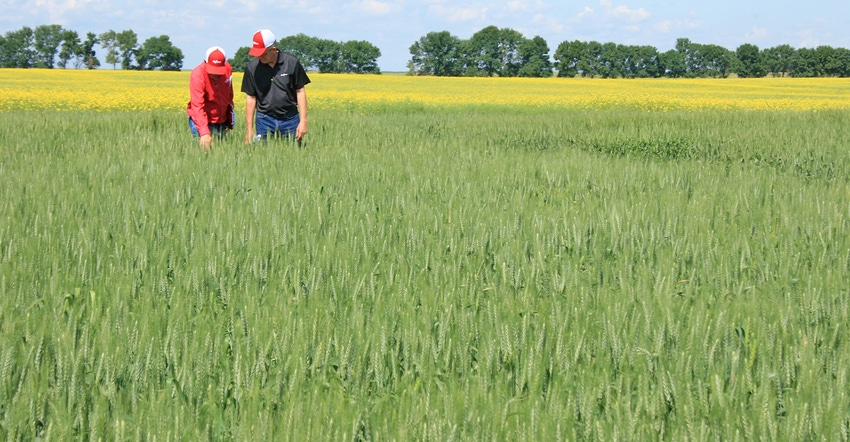May 2, 2017

By Nathan Popiel
There is no single practice that can increase wheat yields. Instead, initiating an integrated plan for disease, weed and insect management can increase production and maximize profit potential. Here are some tips on how to do that:
• Document the presence of weed species, especially before and after product applications, so you can remind yourself what worked (or didn’t work) as you make decisions for the next season.
• Keep an eye out for dead weeds in close proximity to the same species of still-growing weeds — indicating a possibility of resistance. To best avoid developing resistant populations, alternate herbicides with different modes of action, and use multiple modes of action when possible over time. Strongly consider incorporating cultural practices such as tillage and crop rotation.
• Use several tools to control disease. Don’t just apply a fungicide when disease begins to spread. Use crop rotation, delayed planting, resistant varieties, seed treatments and foliar fungicides. Because some diseases can quickly adapt and develop resistant-strains, use products with new chemical classes and/or multiple modes of action to get the best control for your money and help delay the development of resistance.
• Scout frequently for insects to determine when populations reach economic threshold level. Scout fields in an X or Z pattern to get an accurate representative sample. Aphids are one of the major pest concerns in small grains. Scouting fields and applying an insecticide at locally established thresholds can keep populations to a minimum. Aphids can transmit barley yellow dwarf virus, which can reduce tillering, cause sterility and damage kernels. During scouting, also account for any predator insects, such as lady beetles, which feed on aphids and can assist in control. When aphid populations reach threshold levels, select an insecticide that will provide excellent control and help reduce the spread of BYDV. In areas historically affected by aphids, a seed treatment protects the crop from the start.
Monitoring inputs and using measurements to track what works best and how to best manage those resources can pay off with big dividends when harvest rolls around.
Popiel is the Syngenta agronomic service representative in North Dakota. For more wheat agronomy tips, email [email protected].
You May Also Like




